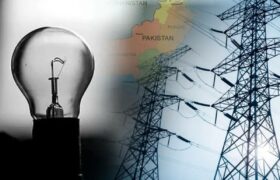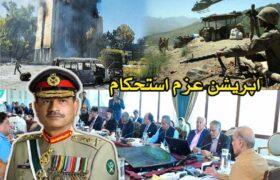Rainfall variation can be observed in the past few years in Pakistan owing to climate change. These variations in the ongoing year have led to submergence of one of the economic hubs of Pakistan i.e. Karachi. Annual rainfall is the worst this year and the city of Karachi is mostly underwater, roads have been turned into rivers, houses have been destroyed and people have to find shelter and food at their own disposal without or hardly any support from the federal or provincial government.
The recent spells of record-breaking rain have wreaked havoc on people of Karachi killing at least 41 people, city officials said Friday. Residents have been without electricity and cellular service for nearly 72 hours.
More heavy rains are expected in southern and southwestern Pakistan in the next 48 hours, creating fears of further damage among masses.
Residents blamed the authorities for the disaster, saying there was no preparation before the start of the normal rainy season.
In the wake of recent disasters, the Supreme Court of Pakistan has ordered the National Disaster Management Authority (NDMA) to clean drains of Karachi and not Sindh government. This decision was criticised among various political circles. In wake of these decisions, NDMA cleaned five major nullahs but it couldn’t solve the drainage issues of Karachi as the real problem was not only cleaning of nullahs but the storm drains of Karachi being encroached by buildings and thus blocking the drain flow and resulting in floods and thus damages.
Heavy rains that hit 22 districts in Baluchistan province on August 7 caused floods and damaged bridges and highways, closing the main Gwadar-Karachi, Quetta-Jacobabad highways in major cities. Several parts of the province were flooded, and military personnel were called in to evacuate the area. In Bolan area, flash floods damaged the Quetta-Sibi highway in various areas, destroying the area and the provincial capital. Earlier, it was reported that the Jhal Magsi, Jafferabad, Sibi, Harnai, Naseerabad and Kachi districts were badly affected by the floods. In Jhal Magsi district alone, six UC and 40 villages were completely flooded by severe flooding. In addition to the damage to infrastructure and the destruction of houses, seven people were reported dead and more than 50 injured, while floods washed away crops and livestock on the way to Jhal Magsi and Jafferabad districts.
Monsoon rains and associated floods continue to plague Pakistan, resulting in at least 90 deaths and 40 injuries, according to media more than 1080 houses, 5 bridges and 10 roads were damaged or destroyed. On August 24-25, rescue operations in Karachi, and Dadu Districts (Sindh province) saw 1,544 people evacuated, following floods and landslides. Media report 3 people killed, and hundreds of homes and streets flooded.
The previous record at that observatory was 298.4mm in 1984. The Hub Dam, one of Karachi’s two major water sources and located in the vicinity of Balochistan, was flooded with more than 339 feet of rainwater. Years ago, the supply of water to Karachi from Hub Dam was often suspended as it burns.
People got stuck in their cars in need of emergency assistance as their vehicles were damaged due to flooded roads. The city’s electricity and cellular services have also been badly affected, adding to the problems.
The never-ending issues of flood and poor management led to more disasters and economic catastrophe. For a developing country like Pakistan, which is facing economic challenges on multiple fronts, these floods are adding fuel to fire. In these situations, disaster authorities need to be vigilant and should use modern technology to predict rains early and accordingly. The proper collection of data should be ensured to simulate and predict early floods and early warning systems should be installed in sensitive areas. The anti-encroachment drives with a full blow are the call of the day to open the blocked storm drains. The ban on plastic bags and safe disposal of waste should be ensured across the city. Above all, dynamic leadership need to be demonstrated to undertake some sensible and rational decisions for the safety of the city and people.




